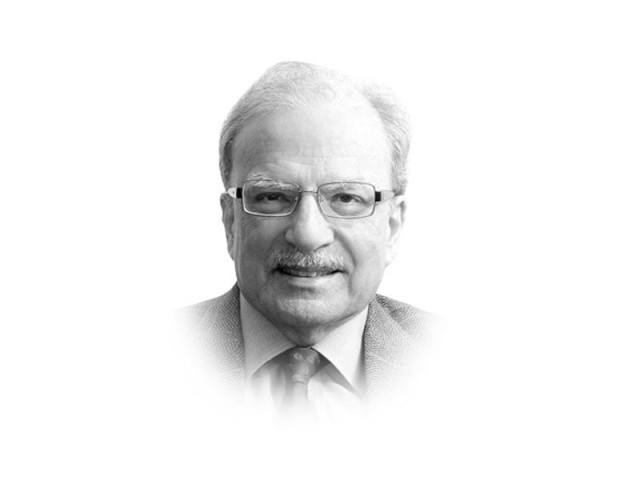Politics of hate and extremism in India
Low-caste people and Muslims were not the only targets of the Hindu extremists who dominate the BJP

The writer is a former caretaker finance minister and served as vice-president of the World Bank
The long-enduring caste system, the Hindu-Muslim divide, and discrimination against women are three of the more important reasons for persistent divisions in the Indian society. The attention these differences have begun to attract are because they distract from the new narrative the Indian elite is writing. The narrative is about the positive change in the country. Millions of people have been lifted out of poverty. The Indian economy is now one of the largest in the world. Everywhere in the country, there are new highways, new airports, and new infrastructure. Hundreds of dollar-billionaires dominate the domestic economy and are also reaching out to the world. The Tata family has acquired Jaguar and Land Rover Motors. The Mittal group is the world’s largest producer of steel. But the BJP, with Hindu supremacist roots, has emboldened supporters to attack minorities, often in the name of Hinduism.
Caste-related policies were one of the more impressive gains made by India since independence. The Untouchables, renamed Dalits, constitute 15 to 20 per cent of the county’s population. They did dirty work such as skinning animals or cleaning toilets. For decades, India has struggled to de-weaponise caste. The Constitution was written soon after independence with a Dalit, B R Ambedkar, an untouchable as its principal author knew that caste was a sore spot that needed to be addressed. The Constitution led to the adoption of affirmative action programmes that helped a fairly significant number of lower caste people to escape poverty and discrimination. But caste-related politics, economics and social practices have not gone away from the Indian system.
“We have a mental illness,” says Avatthi Ramaiah, a sociology professor in Mumbai. “You may talk about India being a world power, a global power, sending satellites into space but the outside world has a different image of India. As long as Hinduism is strong, and as long as there is caste, there will be lower caste. The lower castes don’t have the critical numbers to counterattack and the result has been violence that has been intimate, sadistic and cruel.”
Religion and caste-based hate crimes have spiked in India since the pro-Hindu nationalist government of Narendra Modi came to power in 2014. This is according to new data from IndiaSpend, which tracks reports of violence in English-language media. The data shows that Muslims are overwhelmingly the victims and Hindus the perpetrators of the cases reported. More than half of the cases reported this year through October came from states in northern India — Uttar Pradesh, Bihar, and Orissa — where Modi’s BJP enjoys strong support. In a string of incidents, his party members have been accused of supporting or even inciting violence against Muslims, leaving many in the country’s Muslim community of 172 million — the world’s third largest — fearful.
Low-caste people and Muslims were not the only targets of the Hindu extremists who dominate the BJP. Women were also not granted rights equal to those enjoyed by men. In October and November 2018, the Sabarilmala temple in the state of Kerala became the symbol of the campaign by liberal women to gain equal rights. This is a centuries-old shrine devoted to Lord Ayyapa, a god considered celibate, and women of menstruating age had been prohibited from entering. The temple draws tens of millions of visitors a year but women are not allowed to enter. In late September, the Supreme Court issued a historic ruling giving all women the right to worship at the temple. According to one report, “The court’s ruling set off intense protests and became a crucible for women’s rights, religious beliefs, and state rights in India. Since the verdict, no woman between the ages of 10 and 50 has managed to enter the temple, despite at least a dozen attempts. Meanwhile, women who have publicly stated their intention to visit the shrine have faced intimidation and threats.”
Physical assaults and intimidation are not the only weapons Hindu extremists are using to turn India into a Hindu political entity. As The Economist pointed out in its “Banyan” column published in a recent issue, Prime Minister Modi has chosen the once-called “Nehru jacket” as his official attire but prefers it in a different colour. The one popularised by India’s first prime minister came in plain charcoal, those the latest prime minster wears comes in orange. “The message is unsubtle. Orange is not only a stripe on India’s tricolour flag; it evokes the saffron robes of Hindu priests, and so symbolises a renaissance of India’s ancient faith. In effect, Mr Modi has rebranded a standard item of apparel in keeping with his Hindu-nationalist political project.”
The project also includes renaming of streets, buildings, and towns. The renaming campaign has gone far under the direction of the chief minister of Uttar Pradesh, India’s largest state. Yogi Adityanath, the monk-turned- politician chosen by Modi last year to head the UP administration, has given names to places more to his liking. Continued The Economist: “Urdu Bazaar, a shopping street, became Hindi Bazaar. Ali Nagar morphed into Arya Nagar, Islampur into Ishwarpur. If he had the chance, he said, he would even rename the Taj Mahal, the 17th-century tomb of a Mughal queen that is India’s most iconic monument as Ram Mahal, after the Hindu god.”
Published in The Express Tribune, November 26th, 2018.
Like Opinion & Editorial on Facebook, follow @ETOpEd on Twitter to receive all updates on all our daily pieces.















COMMENTS
Comments are moderated and generally will be posted if they are on-topic and not abusive.
For more information, please see our Comments FAQ